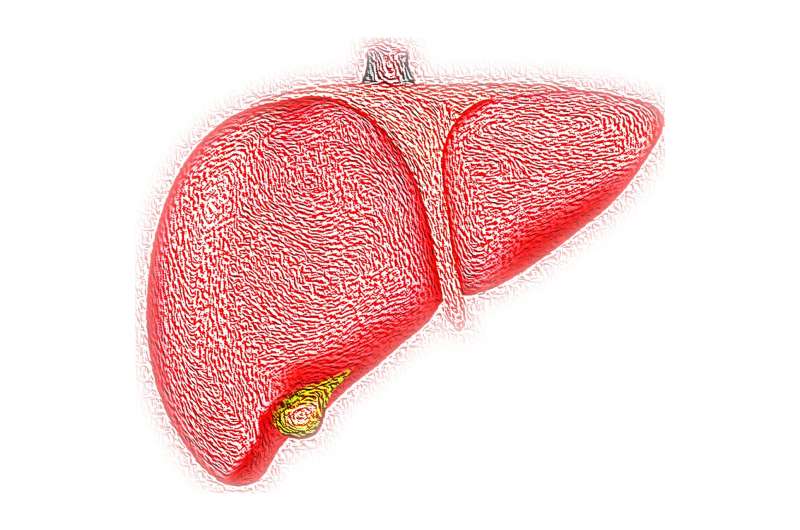
Every year, some 13,000 people are added to the liver transplant waiting list in the United States, but fewer than 9,000 receive a liver. Placement on the list largely depends on a number called the MELD (model for end-stage liver disease) score, which estimates the short-term risk of death in patients with chronic liver disease. The goal is to minimize waitlist deaths by moving the sickest patients to the head of the line.
Recent concern over the accuracy of the MELD score, including a sex disparity that disadvantages women, prompted Stanford Medicine researchers and collaborators to develop a new version of the score, called MELD 3.0. In June, MELD 3.0 was unanimously approved by the board of directors of the Organ Procurement and Transplantation Network, which governs the U.S. transplantation system.
Objective measure of medical urgency
Ray Kim, MD, professor and chief of the Division of Gastroenterology and Hepatology, led the team that developed MELD 3.0, but his history with the scoring system dates to its beginning. Twenty years ago, as an assistant professor at the Mayo Clinic, Kim directed the team that created the original MELD score.
Prior to that, Kim said, liver transplants were performed on a first-come, first-served basis. In the 1970s, liver transplantation was an experimental procedure, but as it evolved into an established treatment for liver disease by the 1990s, the number of people waiting for a liver began to far outpace the number of available livers, which mostly came from deceased rather than living donors. Many of the sickest patients never got their turn.
“The federal government gave a mandate to the transplant medicine community to come up with an objective measure of medical urgency to allocate organs in a scientific fashion,” Kim said.
The MELD system provided an objective way to prioritize candidates based on their predicted survival on the waitlist. It incorporated three common blood test values—bilirubin (a measure of liver damage), creatinine (a measure of kidney function) and the INR (international normalized ratio, a measure of blood clotting time)—to calculate a score between 6 and 40, with higher scores for sicker patients.
“It really shuffled the waiting list, reduced the risk of waitlist mortality and increased transplants. We were able to allocate organs to people who need it most,” Kim said.
A 2016 update to the score, which was also based on work by Kim, added sodium to the formula and is known as MELDNa.
Unintended sex disparity
In recent years, data has revealed a new concern with MELD scoring: sex disparity. “People have shown that the transplant rate for women is lower and waiting list mortality is higher,” Kim said. “Women have been disadvantaged in this system, and that was a completely unintended consequence of this score.”
Muscle mass affects the body’s level of creatinine. Women typically have less muscle mass than men, so, on average, they tend to score 1 to 2 points lower than men, even if they have the same level of kidney dysfunction.
“One point is all you need to make a difference at the margin,” Kim said. One study found that women on the waitlist were 14.4% less likely than men to receive a liver transplant and 8.6% more likely to die waiting for one.
In addition, the demographics of liver disease patients have changed since 2002, reducing the overall accuracy of MELD scoring, according to Allison Kwong, MD, an instructor in gastroenterology and hepatology as well as a co-author of the MELD 3.0 paper. When the model was created, nearly a third of patients on the waitlist had hepatitis C. Patients on the waitlist today are more likely to be older, have alcoholic liver disease or fatty liver disease, and have comorbidities like diabetes and obesity—differences that make their mortality less predictable by the original model.
Last year, Kim, Kwong and their colleagues published a proposal for MELD 3.0 to address these issues. Using three years of data from candidates who were on the liver transplant waitlist from 2016 through 2018, the researchers fine-tuned the model, adding 1.3 points for female candidates, including albumin (a measure of liver function and malnutrition) as a fifth blood test value, limiting the maximum level of creatinine, and adjusting for interactions among the variables.
Together, these alterations will not only level the playing field for women, but improve accuracy for all patients, Kim said.
Compared with MELDNa, the version currently in use, MELD 3.0 would have given significantly higher scores to 8.8% of people who had died while on the waitlist in 2019, particularly women, likely enough to have qualified them for a transplant. When MELD 3.0 was tested on a simulation of liver allocation, it resulted in approximately 20 fewer waitlist deaths per year compared with MELDNa.
Source: Read Full Article